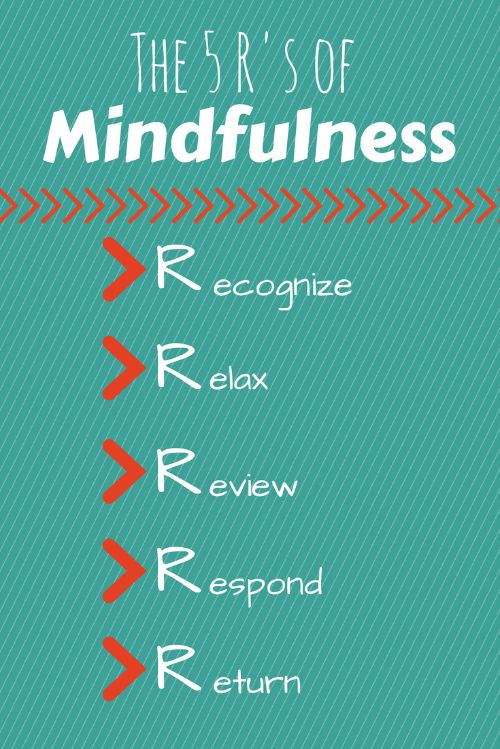Inspiration often feels elusive, a fleeting spark we chase but rarely capture. However, the key to unlocking a consistent wellspring of creative energy lies not in grand gestures, but in the quiet moments of everyday life. This article explores how incorporating simple mindfulness practices—from mindful breathing to mindful walking—can cultivate a fertile ground for inspiration. By tuning into the present moment, we open ourselves to unexpected insights, heightened awareness, and a renewed appreciation for the ordinary, transforming the mundane into a source of boundless creativity. Discover how mindful living can ignite your imagination and fuel your creative endeavors.
Uncovering Inspiration Through Daily Mindfulness
Cultivating Present Moment Awareness
Finding inspiration often involves breaking free from the mental chatter and anxieties that cloud our perception. Mindfulness practices, such as meditation or deep breathing exercises, help us cultivate present moment awareness. By focusing on the sensations in our body, the sounds around us, or even the taste of our food, we quiet the inner critic and open ourselves up to new perspectives. This heightened awareness allows us to appreciate the beauty in seemingly ordinary things, sparking creativity and inspiration where we might not have previously seen it. This shift in perspective can lead to fresh ideas and a renewed sense of purpose.
Embracing Sensory Experiences
Our senses are powerful gateways to inspiration. Mindfully engaging with our surroundings – paying close attention to the colors, textures, smells, and sounds around us – can reignite our creativity. A walk in nature, observing the details of a flower, or listening to a piece of music with full attention can unlock unexpected insights and inspire new artistic endeavors, writing projects, or even problem-solving approaches. By actively engaging our senses, we tap into a wellspring of inspiration that is always available to us.
Practicing Gratitude
Focusing on what we are grateful for shifts our attention away from negativity and scarcity towards abundance and possibility. Daily gratitude practices, such as keeping a gratitude journal or simply taking a moment to reflect on the positive aspects of our day, can significantly impact our emotional well-being and our capacity for inspiration. By cultivating a sense of appreciation for the good things in our lives, we open ourselves up to receiving more, fostering a mindset that is receptive to inspiration and creativity. This positive outlook can fuel our motivation and allow us to approach challenges with a sense of optimism.
Connecting with Nature
Spending time in nature is a powerful way to reconnect with ourselves and find inspiration. Nature's restorative power is well-documented, and simply being outdoors can reduce stress, boost creativity, and provide a sense of calm and perspective. Whether it's a walk in the park, a hike in the mountains, or simply sitting under a tree, engaging with the natural world can offer a wealth of inspiration for our creative pursuits. The beauty, tranquility, and complexity of nature can act as a powerful muse.
Body Scan Meditation for Enhanced Self-Awareness
Body scan meditation is a particularly effective mindfulness technique for accessing inspiration. By systematically bringing awareness to different parts of your body, you become more attuned to your physical and emotional sensations. This heightened self-awareness can lead to a deeper understanding of your own needs and desires, which in turn can spark creative ideas and solutions to problems. The practice cultivates a strong connection between mind and body, opening up pathways for intuitive insights and fresh perspectives.
| Mindfulness Practice | Benefits for Inspiration |
|---|---|
| Meditation | Reduces mental clutter, enhances focus, promotes clarity |
| Deep Breathing | Calms the nervous system, improves emotional regulation, increases creativity |
| Mindful Walking | Connects you to your surroundings, fosters observation, sparks new ideas |
| Gratitude Journaling | Shifts perspective to positivity, enhances appreciation, increases motivation |
| Sensory Awareness | Heightens perception, stimulates creativity, encourages exploration |
How to integrate mindfulness into everyday life?
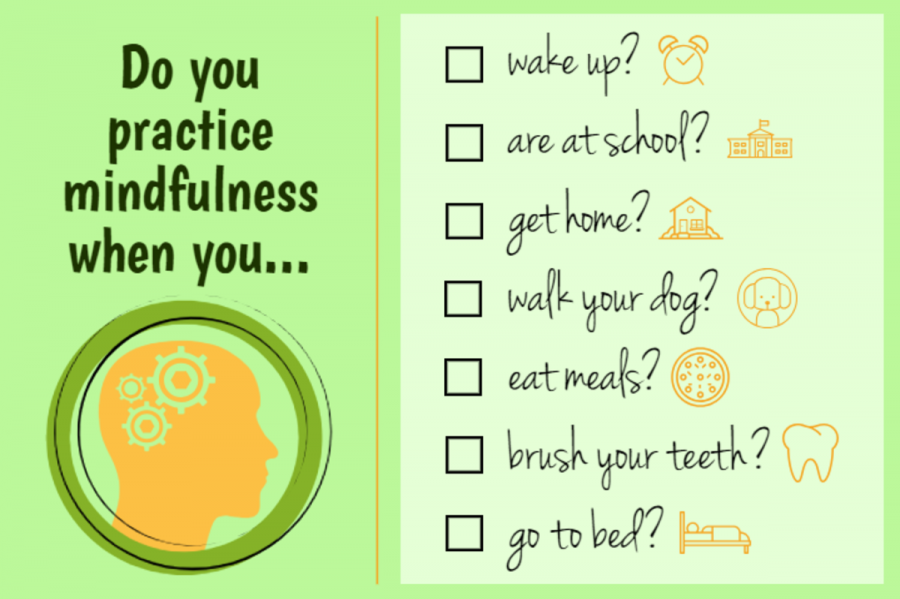
Integrating Mindfulness into Everyday Life
How to Integrate Mindfulness into Everyday Life?
Integrating mindfulness into your daily routine doesn't require grand gestures or hours of meditation. It's about cultivating a present-moment awareness that permeates your actions and thoughts. It’s a gradual process, built upon consistent practice and self-compassion. Don't aim for perfection; aim for progress. Even small, mindful moments accumulate over time, leading to significant shifts in your overall well-being and perspective. The key is to find practices that resonate with you and integrate them seamlessly into your existing lifestyle. Remember that mindfulness isn’t about escaping your thoughts and feelings, but rather observing them without judgment.
Mindful Breathing Throughout the Day
Mindful breathing is the cornerstone of mindfulness practice. It’s a simple yet powerful technique to anchor you in the present moment. You can practice it anytime, anywhere, even during a busy workday. By focusing on the sensation of your breath – the rise and fall of your chest or abdomen – you gently redirect your attention away from wandering thoughts and anxieties. This simple act cultivates calmness and clarity, allowing you to approach tasks with a renewed sense of focus and presence.
- Practice deep, slow breaths: Inhale deeply through your nose, hold for a few seconds, and exhale slowly through your mouth.
- Notice the sensations: Pay attention to the feeling of the air entering and leaving your body.
- Be patient and kind to yourself: Your mind will wander; simply redirect your attention back to your breath without judgment.
Mindful Movement: Incorporating Yoga or Tai Chi
Mindful movement practices like yoga and Tai Chi beautifully blend physical activity with mental awareness. These practices encourage you to pay close attention to your body's sensations, fostering a deeper connection between mind and body. By focusing on your breath and body movements, you cultivate a sense of presence and calm. This, in turn, helps to reduce stress and improve your overall physical and mental well-being. The focus is not just on the physical postures but on the awareness of how your body feels as you move through each pose or flow.
- Start with beginner-friendly classes: Don't feel pressured to be flexible or skilled.
- Focus on your breath: Coordinate your breath with your movements.
- Notice your body’s sensations: Pay attention to how each pose feels in your body.
Mindful Eating: Savor Each Bite
Mindful eating transforms a routine activity into a mindful experience. By focusing on the taste, texture, smell, and even the temperature of your food, you increase your enjoyment of meals and foster a healthier relationship with food. It slows down the eating process, allowing your body to register fullness, potentially preventing overeating. It's about being fully present with your food, appreciating the nourishment it provides, and connecting with the sensations involved in eating.
- Eat slowly and chew thoroughly: Pay attention to each bite.
- Put down your phone and other distractions: Focus solely on your meal.
- Notice the flavors, textures, and smells: Engage all your senses.
Mindful Listening: Engage Fully in Conversations
Mindful listening goes beyond simply hearing words; it involves actively engaging with the speaker and paying close attention to both their verbal and non-verbal cues. It is about being fully present in the conversation, offering your undivided attention, and truly understanding what the other person is communicating. This creates deeper connections with others, improves communication, and reduces misunderstandings. It fosters empathy and creates a more meaningful interaction.
- Put away distractions: Give the speaker your full attention.
- Listen without interrupting: Allow the speaker to finish their thoughts.
- Reflect on what is being said: Show your understanding through your responses.
Mindful Technology Use: Set Boundaries and Limits
In our increasingly digital world, mindful technology use is crucial for maintaining mental well-being. It involves consciously setting boundaries and limits on your screen time, being aware of how technology affects your mood, and utilizing technology in a way that serves your purpose instead of controlling your time. By practicing mindful technology use, you create space for more meaningful activities, reduce digital distractions, and reclaim your attention and focus.
- Set specific times for checking emails and social media: Avoid constant notifications.
- Designate tech-free zones and times: Create pockets of digital downtime.
- Use technology intentionally: Don't passively scroll; be active and purposeful in your digital engagements.
What are the 5 R's of mindfulness?
The 5 R's of Mindfulness
What are the 5 R's of Mindfulness?
The "5 R's of Mindfulness" aren't a universally standardized framework like some other mindfulness models. However, a common interpretation focuses on key aspects of mindful practice and its application to daily life. These five "R's" can be understood as a helpful guide for cultivating and maintaining mindfulness. Different interpretations may exist, but a common interpretation emphasizes Recognize, Reframe, Respond, Release, and Return. These Rs offer a framework for navigating challenges and developing a mindful approach to life's experiences.
Recognize
This stage involves paying attention to your present moment experience without judgment. This includes acknowledging your thoughts, feelings, bodily sensations, and external stimuli. It's about noticing what's happening internally and externally without getting carried away by them. The goal isn't to change anything immediately, but simply to observe.
- Notice your thoughts: Observe thoughts as mental events, without getting caught up in their content.
- Observe your feelings: Acknowledge emotional states without getting overwhelmed by them.
- Become aware of your body sensations: Pay attention to physical sensations such as tension, pain, or comfort.
Reframe
Once you've recognized your experience, the next step is to reframe your perspective. This doesn't mean ignoring negative emotions or thoughts, but rather seeing them in a new light. It involves challenging unhelpful thought patterns and shifting your focus towards a more balanced and compassionate viewpoint. This often includes looking for alternative interpretations of events and recognizing the impermanence of thoughts and feelings.
- Challenge negative self-talk: Identify and question negative or critical thoughts.
- Seek alternative perspectives: Consider different ways of viewing the situation.
- Focus on the present moment: Shift your attention away from worries about the past or future.
Respond
After recognizing and reframing, mindful responding comes into play. This involves choosing actions and reactions based on awareness rather than automatic impulses. It's about being intentional and thoughtful in your behavior and interactions. This might involve choosing a more compassionate response, setting a healthy boundary, or simply pausing before acting.
- Pause before reacting: Take a moment to observe your thoughts and feelings before acting.
- Choose a skillful response: Select actions aligned with your values and goals.
- Act with intention: Be present and aware during your interactions.
Release
This stage emphasizes letting go. Release involves accepting what you cannot control and surrendering to the present moment. This might mean releasing attachments to specific outcomes, letting go of worries about the future, or accepting difficult emotions. It's about finding peace in the present moment, rather than being fixated on changing what is beyond your control.
- Accept what you cannot change: Acknowledge limitations and focus on what you can influence.
- Let go of expectations: Accept things as they are, rather than how you want them to be.
- Practice forgiveness: Forgive yourself and others for past mistakes.
Return
Returning to the present moment is a continuous process. After recognizing, reframing, responding, and releasing, the practice of mindfulness is to gently guide your attention back to the here and now whenever your mind wanders. This ongoing process cultivates a consistent state of awareness and presence, strengthening your mindful capacity over time.
- Regular mindfulness practice: Engage in meditation or other mindfulness exercises regularly.
- Anchor yourself in the present: Use your senses to connect with your surroundings.
- Be kind to yourself: Acknowledge that your mind will wander and gently redirect your attention.
How to achieve daily mindfulness?
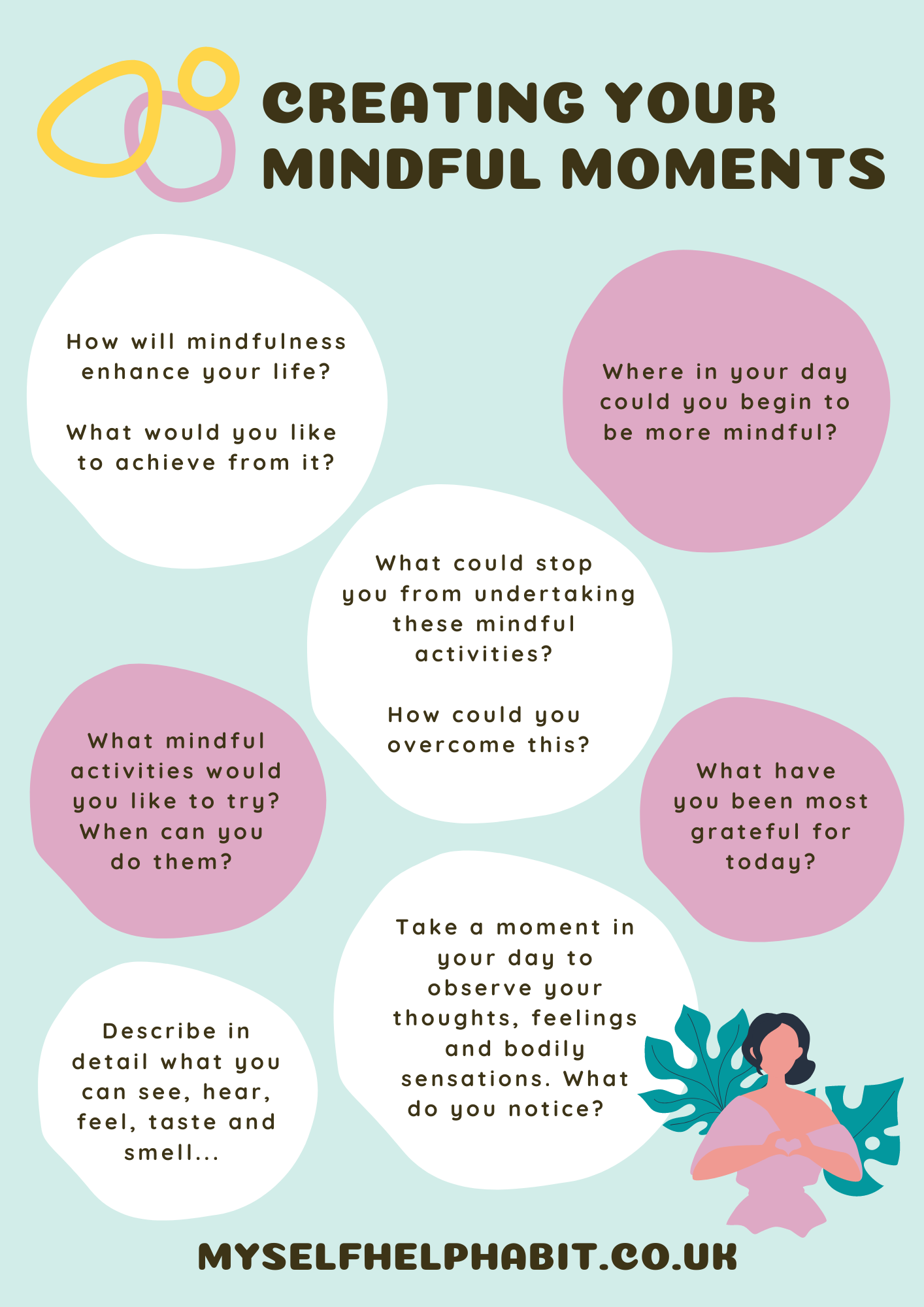
How to Achieve Daily Mindfulness
How to Achieve Daily Mindfulness
Achieving daily mindfulness isn't about achieving a permanent state of zen; it's about cultivating a consistent practice of paying attention to the present moment without judgment. It's a journey, not a destination, and requires consistent effort and self-compassion. There will be days when you're more mindful than others, and that's perfectly okay. The key is to keep practicing and to integrate mindfulness into your daily routine, gradually building the habit.
Start with Small, Consistent Practices
Begin by incorporating short mindfulness exercises into your day. Even a few minutes of focused attention can make a difference. Don't feel pressured to meditate for an hour; start with 5-10 minutes and gradually increase the duration as you feel comfortable. The consistency of your practice is far more important than the length of each session. Small, regular practices are more effective than infrequent, long ones.
- Try a guided meditation app.
- Practice mindful breathing throughout the day.
- Engage in a mindful activity like eating or walking.
Integrate Mindfulness into Your Daily Routine
Don't treat mindfulness as a separate activity. Instead, weave it into the fabric of your daily life. This could involve paying close attention to the sensations of your body while brushing your teeth, savoring the taste of your food during meals, or noticing the sights and sounds around you during your commute. The goal is to make mindfulness a natural part of your everyday experience, rather than a scheduled event.
- Practice mindful breathing while waiting in line.
- Pay attention to your body sensations during routine tasks.
- Notice your thoughts and emotions without judgment.
Cultivate Self-Compassion
Mindfulness is not about striving for perfection. It's about acknowledging your thoughts and feelings without judgment. There will be times when your mind wanders, and that's perfectly normal. Practice self-compassion by gently redirecting your attention back to the present moment without criticism. Be kind to yourself; mindfulness is a journey, not a race.
- Acknowledge your imperfections without judgment.
- Practice self-forgiveness when your mind wanders.
- Celebrate your progress, no matter how small.
Mindful Movement and Body Awareness
Incorporating mindful movement, such as yoga or tai chi, can greatly enhance your daily mindfulness practice. These activities encourage you to connect with your body and pay attention to your physical sensations. Even a simple walk in nature, focusing on your steps and surroundings, can be a powerful way to cultivate present moment awareness. Connecting mind and body through movement fosters a deeper sense of presence.
- Practice yoga or tai chi.
- Go for a mindful walk in nature.
- Engage in any physical activity that encourages body awareness.
Create a Supportive Environment
Your environment can significantly impact your ability to cultivate mindfulness. Create a space in your home that is conducive to relaxation and contemplation. This could be a quiet corner where you can meditate, or a comfortable spot where you can simply sit and breathe. Surrounding yourself with nature or calming elements can also enhance your practice. A supportive environment can significantly aid your mindfulness journey.
- Designate a quiet space for meditation or reflection.
- Minimize distractions in your environment.
- Surround yourself with calming elements, such as plants or calming scents.
What are the four T's of mindfulness?
The Four T's of Mindfulness
The "Four T's" of mindfulness—Training, Timing, Tuning, and Transcending—offer a framework for understanding and practicing mindful awareness. They highlight different aspects of the mindfulness process, emphasizing the importance of consistent effort, mindful attention to the present moment, and the cultivation of a deeper understanding of self and experience.
Training: Cultivating the Habit of Mindfulness
Training in mindfulness involves consistent practice. It's not a passive activity but rather an active engagement in cultivating awareness. This requires dedicated effort and time commitment, similar to learning any new skill. Regular practice, even in short bursts, strengthens the neural pathways associated with attention and awareness, making mindfulness easier and more accessible over time. It’s crucial to establish a routine and stick to it as much as possible.
- Regular Meditation: Daily meditation sessions, even for 5-10 minutes, can significantly enhance mindfulness skills.
- Mindful Activities: Incorporating mindfulness into daily activities, like eating, walking, or breathing exercises.
- Formal vs. Informal Practice: Balancing formal meditation practice with informal mindfulness in daily life is essential.
Timing: Paying Attention to the Present Moment
Timing in mindfulness emphasizes the crucial role of the present moment. The focus is entirely on the "now," without judgment or anticipation of the future, or dwelling on the past. By anchoring your awareness to the present, you cultivate a deeper understanding of your current experience, both physically and emotionally. This awareness helps to interrupt habitual patterns of reactivity and promotes a more balanced emotional state.
- Anchor your attention: Focus on a specific sensory input (breath, sound, body sensations).
- Notice your thoughts and emotions without judgment: Observe them as passing events rather than solid realities.
- Gentle redirection: When your mind wanders, gently bring your attention back to your anchor point.
Tuning: Sharpening Your Sensory Awareness
Tuning refers to the cultivation of heightened sensory awareness. It involves paying close attention to the subtle details of your experience—the sensations in your body, the sounds around you, the tastes and smells, the sights before your eyes. By tuning into these sensory experiences without judgment, you deepen your connection to the present moment and enhance your appreciation for the richness of life. This practice helps ground you in the here and now, reducing mental chatter and increasing awareness.
- Body Scan Meditation: Systematically noticing sensations throughout the body.
- Mindful Walking: Paying attention to the feel of your feet on the ground, your posture, and your surroundings.
- Mindful Eating: Noticing the textures, tastes, smells and temperatures of your food.
Transcending: Moving Beyond the Limitations of the Self
Transcending, in the context of mindfulness, refers to a shift in perspective. It's about moving beyond the narrow confines of the ego and recognizing a larger context of existence. This doesn't necessarily imply religious beliefs but rather a widening of one's awareness to include the interconnectedness of all things. This aspect of mindfulness fosters compassion, empathy, and a deeper sense of meaning and purpose.
- Developing Compassion: Extending kindness and understanding to oneself and others.
- Cultivating Acceptance: Accepting what is, rather than resisting or judging it.
- Connecting to something larger than yourself: Nature, community, spiritual practice.
Frequently Asked Questions
What are some everyday mindfulness practices I can use to find inspiration?
Many simple practices can spark inspiration. Mindful walking, paying close attention to your body's sensations as you move, can shift your perspective. Mindful eating, savoring each bite and noticing the textures and flavors, connects you to the present moment. Mindful breathing, focusing on the rise and fall of your breath, can calm your mind and open up space for creative thoughts. Even mindful listening to music or nature sounds can unlock unexpected inspiration.
How can I incorporate mindfulness into my daily routine to boost creativity?
Start small. Begin by dedicating just five minutes each day to a mindfulness practice, perhaps during your morning commute or lunch break. You could use a guided meditation app or simply find a quiet space to focus on your breath. Consistency is key – the more you practice, the easier it becomes to incorporate mindfulness into your daily life and the more readily inspiration will flow. Gradually increase the duration of your practice as you feel comfortable. Experiment with different techniques to discover what works best for you.
I'm struggling to stay present; how can mindfulness help me find inspiration when my mind is racing?
When your mind races, it's helpful to gently redirect your attention back to your breath or bodily sensations. Acknowledge the racing thoughts without judgment, and then refocus on a sensory detail, like the feeling of your feet on the floor or the temperature of the air on your skin. Practicing patience and self-compassion is crucial; it's normal for your mind to wander. The aim isn't to eliminate thoughts but to cultivate a kinder, more aware relationship with them. Over time, you'll improve your ability to stay grounded in the present moment, leading to increased clarity and inspiration.
How do I know if my mindfulness practices are actually working towards inspiring me?
You might notice a shift in your perspective, feeling more open to new ideas and possibilities. You might find yourself experiencing increased curiosity and a greater sense of calm and focus. Inspiration might manifest as a sudden burst of creativity, a new problem-solving approach, or simply a feeling of renewed energy and enthusiasm for your work or life. Trust your intuition; if your practices leave you feeling more peaceful, present, and receptive, then you're likely on the right track.
https://youtube.com/watch?v=6A-CTt5xPNQ%26pp%3DygUTI21pbmRmdWxsaXZpbmdkYWlseQ%253D%253D
 How to Turn Relaxation Into a Shared Family Experience
How to Turn Relaxation Into a Shared Family Experience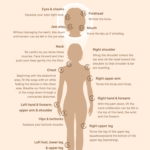 How to Master the Art of Relaxation
How to Master the Art of Relaxation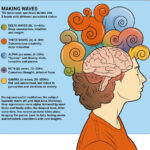 Transform Your Life with Daily Meditation
Transform Your Life with Daily Meditation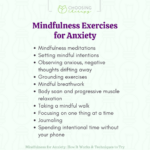 Simple Mindfulness Tips to Calm Your Mind
Simple Mindfulness Tips to Calm Your MindIf you want to know other articles similar to How to Find Inspiration in Everyday Mindfulness Practices you can visit the Wellness and Mindfulness category.


